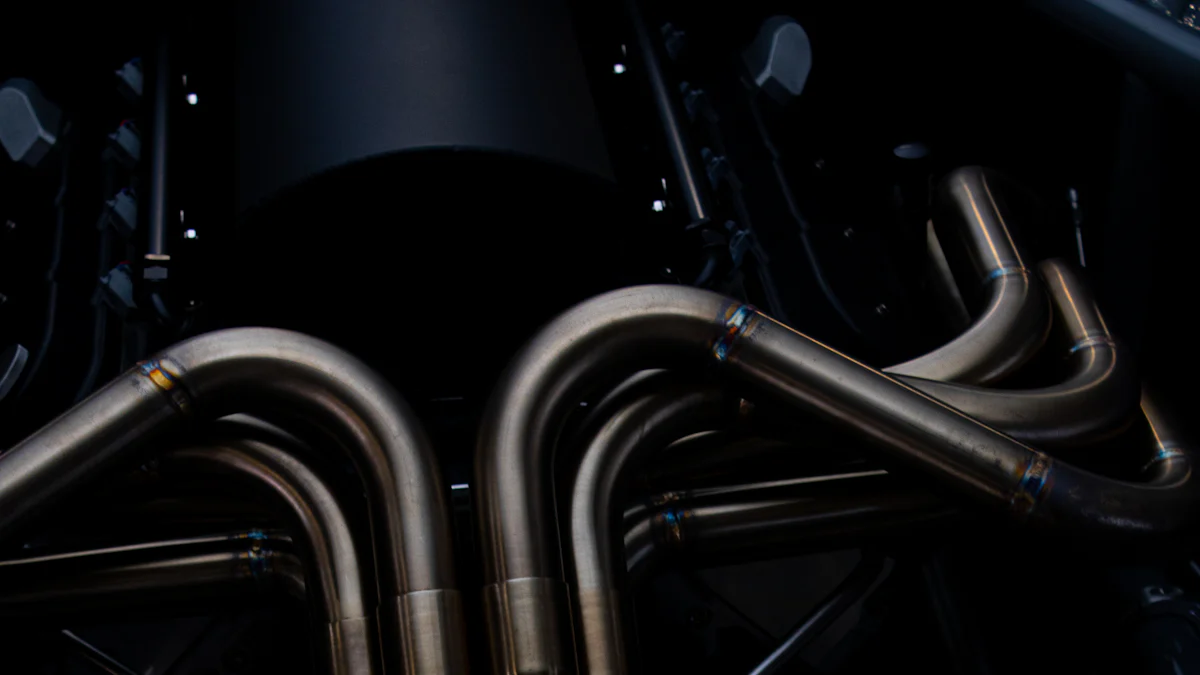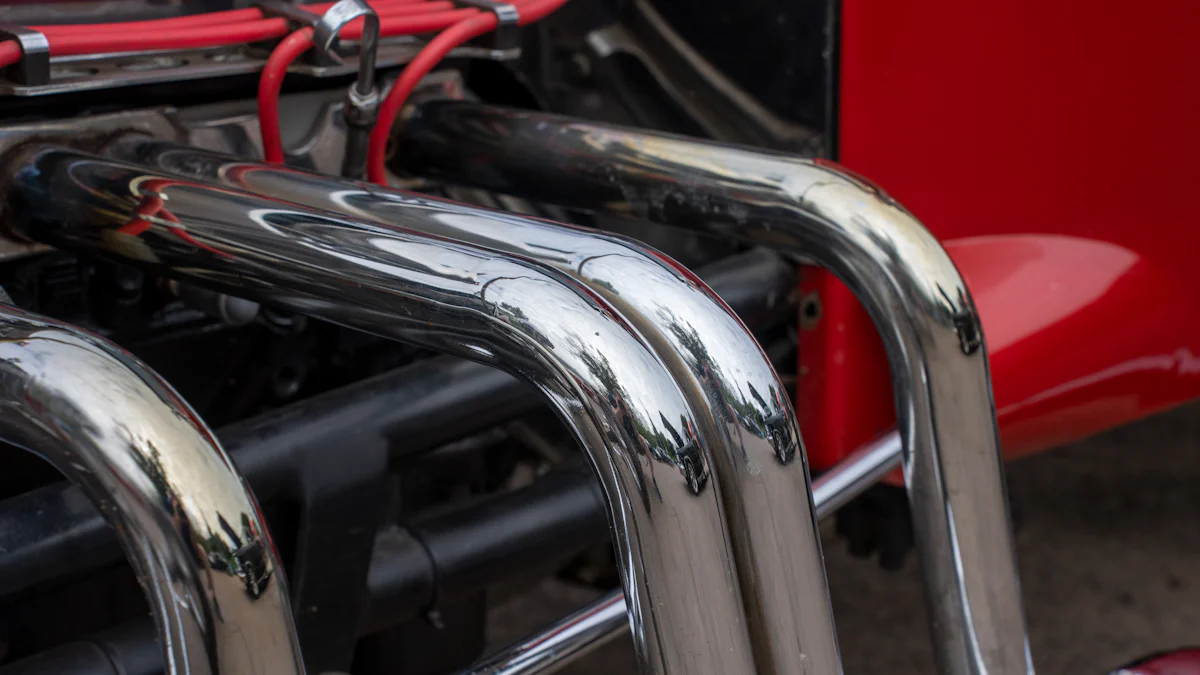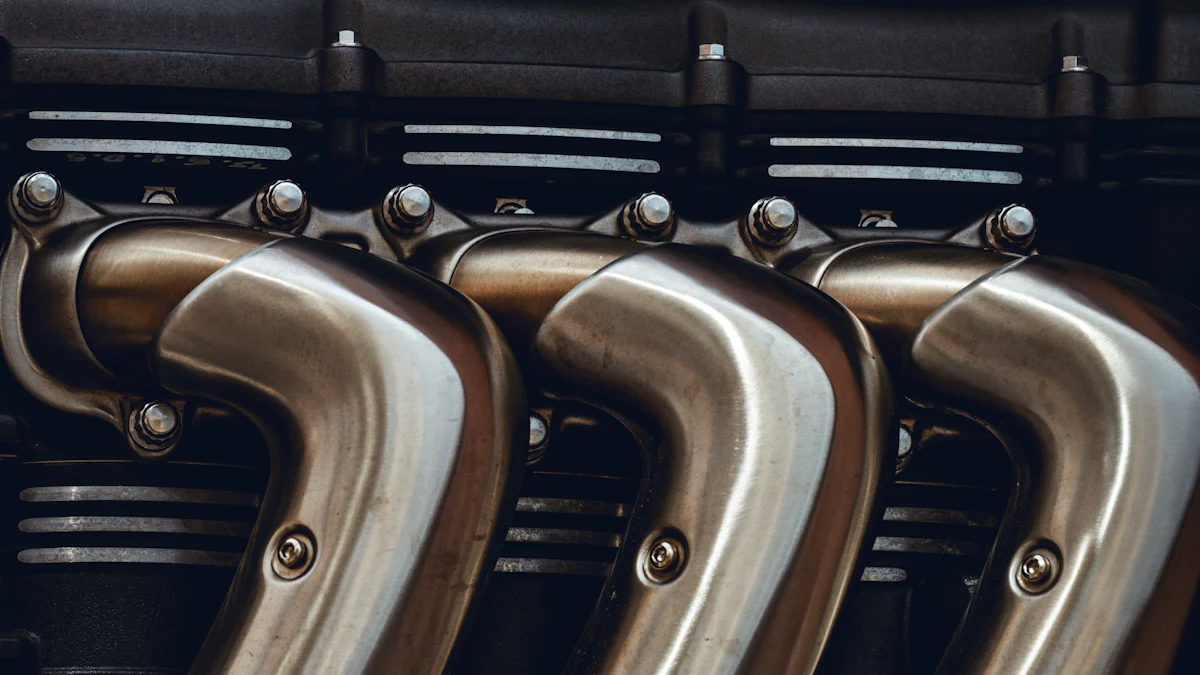
An exhaust manifold serves as a critical component in any automotive vehicle’s exhaust system. This part collects exhaust gases from the engine cylinders and directs them to the exhaust pipe. The exhaust manifold significantly influences engine performance, fuel efficiency, and overall vehicle operation. The global market for automotive exhaust manifolds reached a value of USD 6680.33 million in 2023, reflecting its importance. The development of hybrid and electric vehicle technologies, along with stricter emissions norms, continues to shape this market.
What is an Exhaust Manifold?

Function of an Exhaust Manifold
Collecting Exhaust Gases
The Exhaust Manifold serves as a crucial component in the vehicle’s exhaust system. It collects exhaust gases from the engine cylinders. This collection process ensures that the gases exit the engine efficiently. The design and geometry of the manifold play a significant role in optimizing backpressure. Proper backpressure promotes the easy passage of gases out of the cylinders.
Directing Gases to the Exhaust Pipe
After collecting the exhaust gases, the manifold directs them to the exhaust pipe. This direction ensures that the gases flow smoothly through the exhaust system. The exhaust manifold acts as a channel, guiding the gases away from the engine. This guidance helps in maintaining optimal engine performance and reducing harmful emissions.
Importance in Vehicle Performance
Impact on Engine Efficiency
The Exhaust Manifold significantly impacts engine efficiency. By optimizing the flow of exhaust gases, the manifold enhances the engine’s output. Efficient gas flow reduces the workload on the engine. This reduction leads to better fuel efficiency and improved overall performance. The design of the manifold affects how well the engine breathes, directly influencing its effectiveness.
Role in Emission Control
The exhaust manifold also plays a vital role in emission control. By directing exhaust gases efficiently, the manifold helps in reducing harmful emissions. Properly designed manifolds ensure that gases pass through emission control devices effectively. This process aids in meeting stringent emission norms and regulations. The manifold’s role in emission control contributes to a cleaner environment and better air quality.
Benefits of Exhaust Manifolds

Improved Engine Performance
Enhanced Exhaust Flow
An Exhaust Manifold enhances the flow of exhaust gases from the engine. This improvement reduces backpressure, allowing the engine to expel gases more efficiently. Enhanced exhaust flow leads to better engine breathing, which directly impacts performance. The design of the manifold plays a crucial role in optimizing this flow.
Increased Horsepower
The exhaust manifold contributes to an increase in horsepower. By reducing backpressure, the manifold allows the engine to produce more power. This increase in power results from the engine’s ability to expel exhaust gases more effectively. High-performance manifolds can significantly boost the engine’s output.
Fuel Efficiency
Optimized Combustion
The exhaust manifold optimizes combustion within the engine. Efficient gas flow ensures that the engine operates at peak efficiency. This optimization leads to better fuel combustion, which enhances overall engine performance. Properly designed manifolds contribute to this optimized combustion process.
Reduced Fuel Consumption
The exhaust manifold helps reduce fuel consumption. By improving the engine’s efficiency, the manifold lowers the amount of fuel needed for operation. This reduction in fuel consumption translates to cost savings for the vehicle owner. Efficient exhaust systems play a vital role in achieving these savings.
Reduced Noise
Noise Dampening Properties
The exhaust manifold possesses noise-dampening properties. These properties help reduce the noise generated by the engine. By minimizing noise, the manifold contributes to a quieter driving experience. This noise reduction is particularly beneficial for enhancing driving comfort.
Quieter Engine Operation
The exhaust manifold ensures quieter engine operation. By efficiently directing exhaust gases, the manifold reduces the noise produced by the engine. This quieter operation improves the overall driving experience. Vehicle owners benefit from a more pleasant and less noisy ride.
Cost-Effectiveness
Affordable Replacement Parts
The Exhaust Manifold offers affordability in replacement parts. Vehicle owners can find cost-effective options for their specific models. Manufacturers produce these parts with high precision, ensuring compatibility and performance. The availability of affordable parts reduces the financial burden on vehicle maintenance. This affordability makes the exhaust manifold a practical choice for many drivers.
Long-Term Savings
The exhaust manifold contributes to long-term savings for vehicle owners. Efficient gas flow reduces engine strain, leading to lower fuel consumption. This efficiency translates to significant savings over time. Properly maintained manifolds also extend the engine’s lifespan, reducing the need for costly repairs. Investing in a high-quality exhaust manifold ensures reliable performance and financial benefits.
Downsides of Exhaust Manifolds
Increased Noise
Potential for Loud Operation
Exhaust manifolds can generate significant noise during operation. The design and material of the manifold influence the noise levels. High-performance exhaust systems often produce louder sounds. This loud operation can be disruptive, especially in urban environments. Vehicle owners may find the increased noise undesirable.
Impact on Driving Comfort
The noise from an exhaust manifold can affect driving comfort. Constant loud sounds can lead to a less pleasant driving experience. Passengers may find the noise distracting or irritating. Reducing noise levels often requires additional modifications or aftermarket parts. These adjustments can increase overall maintenance costs.
Potential for Cracks
Thermal Stress
Thermal stress poses a significant risk to exhaust manifolds. The manifold experiences extreme temperature fluctuations during operation. Rapid heating and cooling cycles can cause the material to expand and contract. This expansion and contraction lead to the development of cracks over time. Cracked manifolds can result in exhaust leaks and reduced engine performance.
Material Fatigue
Material fatigue is another concern for exhaust manifolds. Prolonged exposure to high temperatures weakens the manifold’s structure. The weakening process makes the material more susceptible to damage. Advanced designs use materials like stainless steel and alloys to combat fatigue. However, traditional manifolds may still suffer from this issue.
Need for Customization in High-Performance Engines
Custom Manifold Design
High-performance engines often require custom manifold designs. Standard exhaust manifolds may not meet the specific needs of these engines. Custom designs optimize exhaust flow and enhance engine performance. However, creating custom manifolds involves additional costs and expertise. Vehicle owners must invest in specialized parts and services.
Compatibility Issues
Compatibility issues can arise with custom exhaust manifolds. High-performance engines may have unique requirements that standard manifolds cannot fulfill. Ensuring compatibility involves careful planning and precise measurements. Incompatible manifolds can lead to poor engine performance and potential damage. Vehicle owners must consider these factors when upgrading their exhaust systems.
Exhaust manifolds offer several benefits, including improved engine performance, enhanced fuel efficiency, and reduced noise levels. These components also provide cost-effective replacement options and long-term savings for vehicle owners. However, exhaust manifolds can increase noise, risk cracks due to thermal stress, and require customization for high-performance engines.
Weighing the pros and cons of exhaust manifolds involves considering both their advantages and potential drawbacks. Proper maintenance and quality materials can mitigate some downsides, ensuring reliable performance.
Making an informed decision about exhaust manifolds requires understanding their impact on vehicle operation and maintenance. Vehicle owners should evaluate their specific needs and consult professionals when necessary.
Post time: Jul-29-2024



